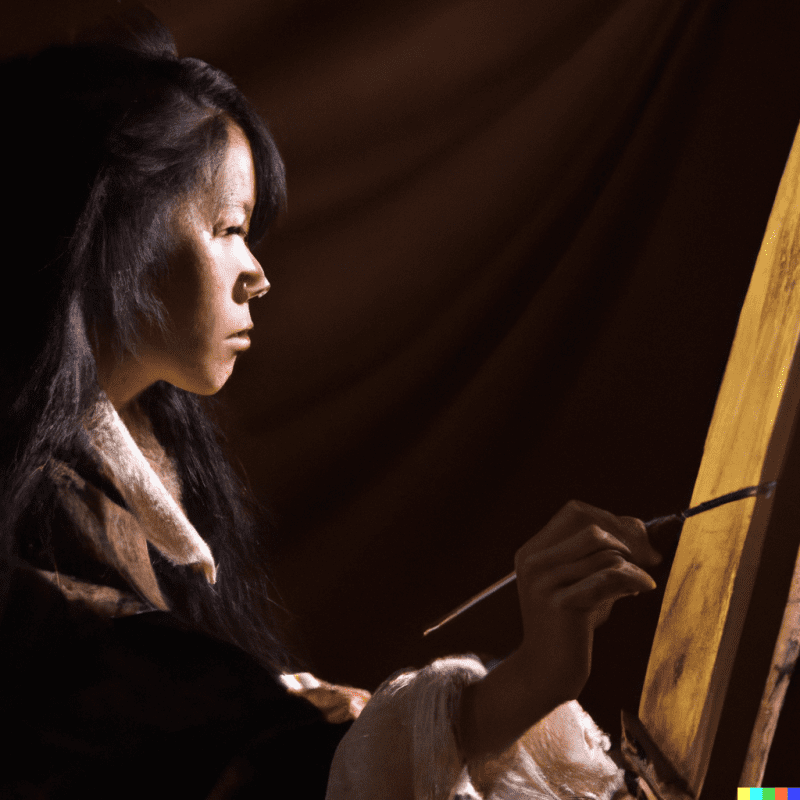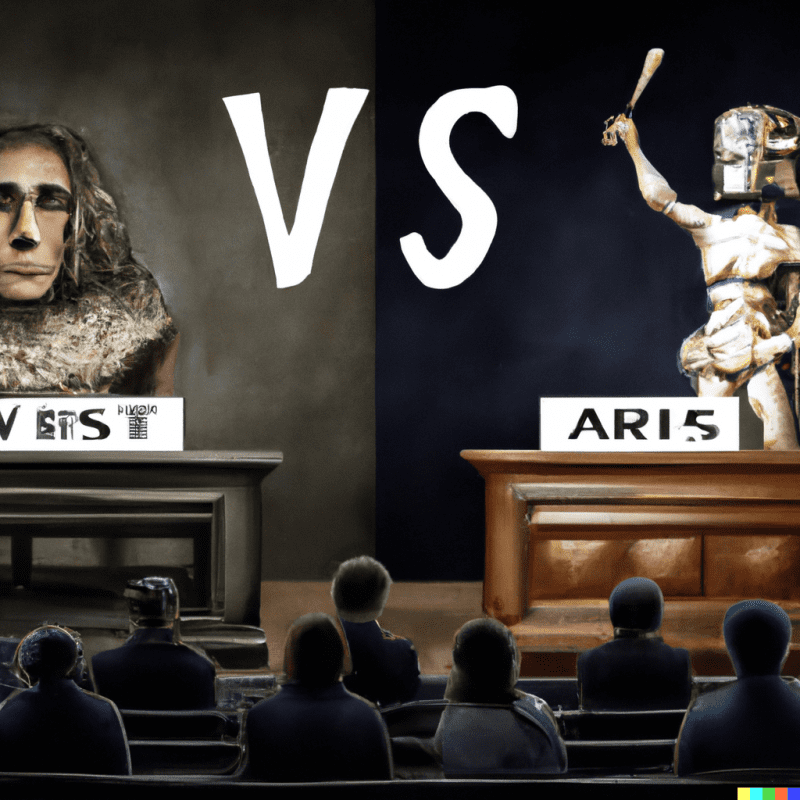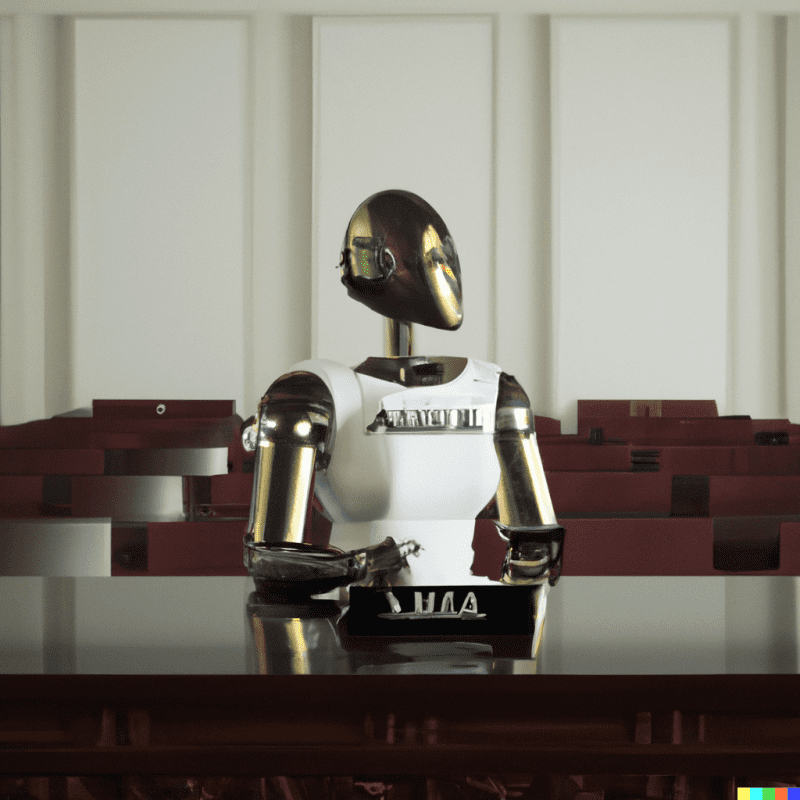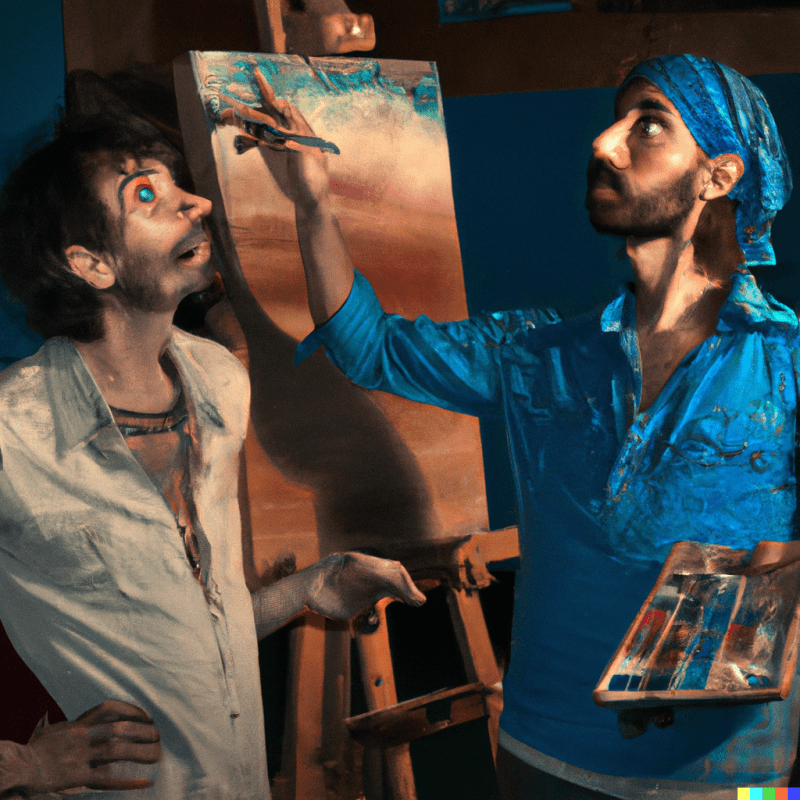Artificial intelligence applications create images in an instant based on works found on the internet, for example in a style characteristic of an individual artist. Some professionals in the field consider it stealing.
In recent weeks, social media applications have been filled with picturesque, often fantasy-style face pictures. Many are enthusiastic about manufacturing them with the Lensa AI application.
The app’s popularity exploded on the eve of December when it launched the new Magic Avatar feature. In it, the user first uploads pictures of himself to the application. The app then creates pictures of him in different environments and styles for a fee.
Images are made by artificial intelligence.
At the same time, other types of pictures have appeared on Facebook and elsewhere on the Internet. In them, a prohibition sign is drawn over the English word AI, which means artificial intelligence. Various variations of the image are shared especially by professionals in the visual field.
In addition, professionals in the visual field are afraid that their work will be buried online in the mass generated by artificial intelligence. It reduces visibility and thus orders.
We asked a graphic artist, an artist and a photographer what they think about AI art.
Graphic designer: Ideation separates humans from artificial intelligence
He is a graphic designer and illustrator from Espoo, who makes illustrations for, among others, Helsingin Sanomat and describes himself as a visual storyteller.
Work starts with an idea. Only after having an idea does he think about how to implement it visually.
In artificial intelligence, the process is the opposite.
– Artificial intelligence cannot come up with ideas. It scoops up images from a huge vat and combines them. Then the person looks to see if any of them could work, Tietäväinen says.
In Tietäväinen’s opinion, it is ideation that separates artificial intelligence from a human artist or illustrator.
He is worried that artificial intelligence gives, for example, a journalist the false impression that he could do the work of a visual professional.
– An illustrator’s job is to search for something new and original. Illustration should dig deep, analyze and enrich journalism. If it is done by means of artificial intelligence by giving subject words, the illustration does not add value. It’s very hard for me to imagine a world where artificial intelligence has something to say.
Still, many of the journalistic illustrations, for example in newspapers, could be replaced by products of artificial intelligence, according to Tietäväinen.
– Visual journalism is currently in the lowlands. Many people make collages from stock photos in the same way as artificial intelligence. They rarely contain any ideation that enriches the story, he criticizes.

Despite everything, the development and generalization of technology also fascinates Tietäväi. He too would be interested in trying, for example, Magic Avatar, but he does not want to give the required information about himself to the application.
Artificial intelligence will hardly take Tietäväinen’s job. Applications, at least in the near future, cannot be asked to come up with ideas and communicate like humans, he thinks.
– I’m not afraid of stealing myself. However, I know that the name and style of many, for example, authors of fantasy works have been used a lot in these applications.
In Tietäinen’s opinion, rules should be created for artificial intelligence art and it could work, for example, on the basis of a license fee. Then the artists would be compensated when the artificial intelligence makes use of their work. However, tracking could be difficult, because artificial intelligence can use millions of works in the same image.
– There would be a price for the products of artificial intelligence. They would no longer be able to compete with real authors with their freeness, which would be a really good thing, says Tietäväinen.
Graphic artist: The copyright issue should be taken to court
Hannula is a printmaker from Espoo, whose works are based on drawing and are created entirely by hand.
– What attracts me to drawing is that it is thinking with the help of a pen. I don’t want to outsource that to AI. I am happy to make all the mistakes myself and correct them. Errors are human, says Hannula.
Hannula sees artificial intelligence art as a natural continuation of the generalization of computer-assisted art. The computer is now only given more power.
Copyright issues are not new either, the artist points out. Similar discussions have often been held throughout history. He tells an example from the 1970s.
– It’s the same question with artificial intelligence. Can someone else’s creative input be used? Is everything on the internet free game and how are copyrights implemented? Hannula states.

In his opinion, artificial intelligence and copyrights would also require legal cases. However, it is difficult for individual artists to file lawsuits when it is a large company.
Lawsuits are difficult for another reason.
Any work receives copyright protection if it exceeds the so-called work threshold. The work threshold is exceeded if the work is an independent and original product of the intellectual creative work of its author.
– Even a copy is considered an independent work if it is sufficiently original. There we are in an interpretive quagmire.

Images created by artificial intelligence are art if their creation is guided by an artist who signs the work and puts it on display in a museum or gallery. On the other hand, even a beautiful image created by an ordinary treader with artificial intelligence does not meet the criteria of art. This is how Hannula defines it.
It’s kind of an agreement about what art is.
– The whole art is a bit of an illusion. That’s the decision. Art can be many things that have nothing to do with each other.
Hannula is confident about the future. He believes that there will be enough demand for traditional artists in the future, and not all art takes place online.
– I just have to bend in the wind and do my own thing. You shouldn’t worry too much.
Photo artist: Copying is part of art
He has tried it.
The process starts with him having an image in his mind that he wants to realize. He writes search words into the application, and the algorithm offers numerous picture options based on them. After that, he starts working on the image by changing the keywords. Artificial intelligence creates new images that are even closer to the original idea.
– Basically, the artist decides what the artificial intelligence will do, Ylijäskö states.

Other artists have used Ylijäskö’s photographs in their works. Visual artists have used them and tattoo artists have tattooed them on the skin of their clients.
The photographer doesn’t think it’s offensive at all.
– I find it more heartwarming that someone is so inspired by my work that they want to use it. I don’t think it’s stealing, it’s inspiration.
Do you think that copying belongs to art?
– Ideas don’t suddenly come out of nowhere, but inspiration comes from learned things, influences and experiences.
For him, the same applies to artificial intelligence.
– Artificial intelligence samples the original work. The original work lives on, its life cycle continues in a different form. Artificial intelligence creates a new kind of version, like a remix, which is its own kind of work.
Ylijäskök also believes that artificial intelligence will not replace human artists or traditional art methods, but will become a part of the art field.
– Creating an emotional level is the strength of the human factor. After all, the most important thing about a work is that it evokes emotions. Does it matter if it’s done with painting, photography, or artificial intelligence?
*You can discuss the topic on 23.12. until 11 p.m.*

